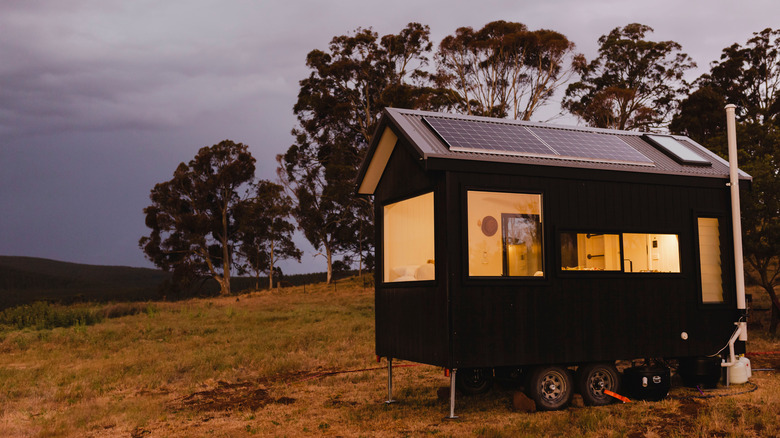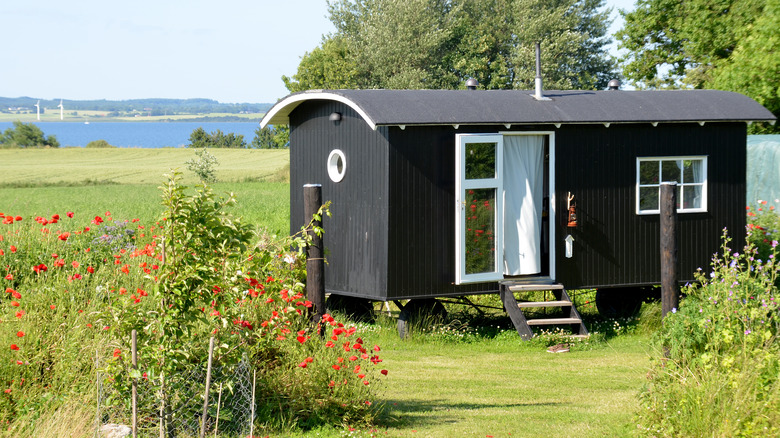The Real Reason Tiny Homes Aren't Legal In Every State
Tiny homes are popular with people looking to live sustainably and save money. To be labeled a tiny home, it needs to have no more than 400 square feet of living space and can be as small as 60 square feet. These homes can be built on a permanent foundation or wheels. Tiny homes are so popular because they require fewer resources like energy, electricity, and water, according to Green Matters.
While tiny homes are known for their pros, they have their fair share of cons. The main con is that 24 of the 50 states in the U.S. are against homes this size. These states don't openly forbid tiny homes, but they strongly discourage them and have regulations set that prevent tiny homes from being legal. Regulations and permits for tiny homes vary not only by state but by county, so if you're looking to build your own tiny home, you should check with your local municipality before breaking ground.
Safety Hazards
Tiny homes are marked illegal in many states because of zoning and safety regulations. Even if you own the land you plan to build your tiny home on, your county can deem it illegal depending on their zoning regulations. There are also safety regulations that you must follow when building your tiny home so you can legally live in that home.
Many of these safety regulations can be hard to follow when building a tiny home. Since the home is so small, every inch of space needs to be used to its full capacity. However, to ensure a safe living environment, many municipalities require all homes to have common areas with ceiling heights of at least 6 feet, 8 inches, at least one bathroom separate from all other rooms, at least one window, and a viable emergency exit, as Green Matters states. There also needs to be proper air ventilation in the home.

